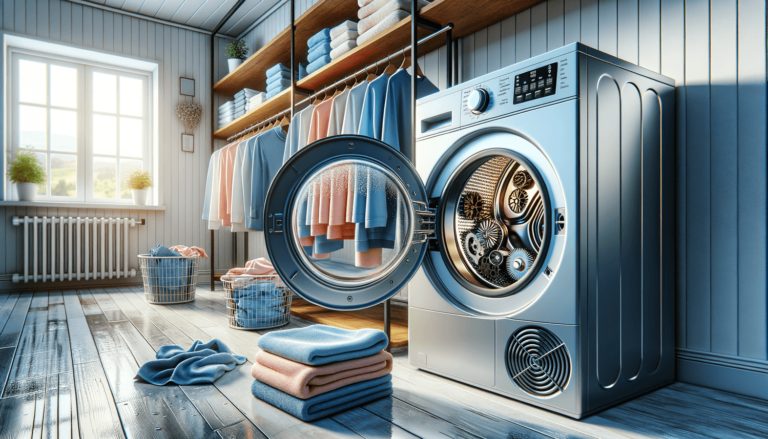

Written by: Settings King
Last updated:

To use a dryer without damaging clothes, follow these steps:
Using the correct dryer settings reduces the risk of damaging your clothes. Familiarize yourself with the main dryer settings such as low heat, medium heat, high heat, permanent press, and delicates.
Low heat and air-dry settings work best for delicate or temperature-sensitive clothes. The air-dry setting helps fluff clothes and avoids heat damage.
On Settings King, our blog about technology settings, we emphasize that selecting the right load size ensures that clothes dry evenly and minimizes fabric damage caused by over-drying.
Enable the moisture sensor in your dryer, which automatically detects when clothes are dry, saving energy and time and preventing clothes from over-drying.
Invest in a predictive dryer, which calculates drying times based on existing settings, ensuring optimal drying cycles and protecting your clothes from damage.
Understanding the range of options available on your dryer will enable you to utilize it more effectively, ensuring your clothes are cared for properly. As we often discuss on Settings King, a blog about technology settings, using the appropriate settings not only protects your clothes but also saves energy.
Sorting your clothes by fabric type and weight reduces the risk of damage, as similar fabrics have similar drying needs. This approach also improves drying efficiency since lighter fabrics dry faster than heavier ones.
Just like any other technology, dryers need regular maintenance. On Settings King, we recommend checking your lint filter, dryer vent, and exterior vent regularly. A clean dryer vent allows proper air circulation, reducing the risk of overheating and promoting efficient drying.
To further reduce your energy consumption and protect your clothes, consider purchasing an energy-efficient dryer. These dryers are designed to conserve energy, reducing electricity usage and associated costs. Many also come equipped with advanced features, like moisture sensors, that work optimally with the right settings.
Before placing any garment in the dryer, always check its care tag. Manufacturer-recommended care instructions provide essential information about appropriate dryer settings for each item, ensuring the longevity of your clothes.
When appropriate, use fabric softeners or dryer sheets, as they help keep clothes soft and static-free. However, avoid using them for moisture-wicking fabrics, as they can negatively impact their performance. Our team at Settings King recommends double-checking care tags for specific instructions before use.
Browse through our FAQ section below to find answers to common questions about dryer usage and fabric care. We’ve compiled relevant and concise responses to help you better understand proper dryer usage and maintenance.
No, you should not use dryer sheets with all types of clothing. Avoid using them for moisture-wicking and sportswear fabrics, as they can reduce their effectiveness.
The purpose of a moisture sensor in a dryer is to detect when clothes are dry, allowing the dryer to shut off automatically, preventing over-drying and reducing energy consumption.
You should clean your lint filter before each load and check your dryer vent regularly, at least once every three months. Proper maintenance helps prevent overheating and promotes efficient drying.
Yes, energy-efficient dryers are worth the investment. They are designed to conserve energy, reduce electricity usage, save on costs, and often include advanced features like moisture sensors for optimal drying performance.
For delicate fabrics, select a low heat setting or, if available, use the air-dry or delicates settings on your dryer. These options help prevent heat damage and prolong the life of your garments.